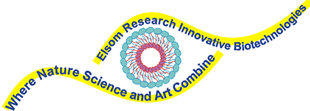LinoCare™ features
five powerful “ingredients that move things around”:
- Conjugated
linoleic Acid (CLA) containing Cis9, Tra11 and Tra10,
Cis12 in the form of free fatty acids.
- Oil/water
extract of chia seeds (Salvia
hispanica).
Chia seed oil contains mostly omega-3 and omega-6 fatty
acids. (about 30% omega-3 fatty acids and about 40%
omega-6 fatty acids) and a high amount of alpha linolenic
acid (ALA) in the form of triglycerides. The
extract contains high levels of lignins and
soluble fiber which are very beneficial to skin and add thickness
and luster and manageability to hair.
- Cetyl
myristoleate is used orally to eradicate any kind
of chronic pain, especially arthritic pain, along with its
accompanying symptoms such as inflammation, swelling, fever,
and joint deformity.
We
make no claims as to any of the medicinal activities listed above
for cetyl myristoleate in our products; it is used because of
the way it feels and absorbs on skin.
-
Methyl
sulphonyl methane (MSM),
a source of organic sulphur, is very soothing to skin and
scalp.
- Monolaurin (glyceryl
laurate) is
claimed to adversely affect bacteria, yeast, fungi, protozoa,
and
certain viruses when taken orally.
In some bacteria its effect is
reported to be about 5,000 times more inhibitory
then that of alcohol. Monolaurin is reported
to be a potent in vitro inactivator
of several sexually-transmitted bacteria
such as gonorrhea.
In another study, monolaurin did not appear
to have an adverse effect on desirable intestinal
bacteria. In addition, there appears to be
very little development of bacterial resistance. Among
the viruses inactivated by monolaurin or
comparable mono-glycerides are the measles virus, herpes
simplex virus (1 and 2), HIV, hepatitis C,
and
others.
A
number of fungi, yeast, and protozoan parasites
are also inactivated or killed by monolaurin.
This includes several
species of fungi such as ringworm; yeasts
such as candida albicans; protozoan parasites such as giardia
lamblia and chlamydia trachomatis.
Monolaurin
is currently sold without
medicinal claims to be taken orally, and is
used topically as an enhancer
to anti-microbial ingredients in hair care and skin texture
uses. It appears to have adaptogenic properties,
and acts as an absorption enhancer
of other ingredients and in synergy with cetyl myristoleate
and MSM.
We
make no claims as to any of the medicinal activities
listed above such as anti-microbial or
other activities for monolaurin.
In our products; it is used because of the
way
it
feels and
absorbs on skin.
|


